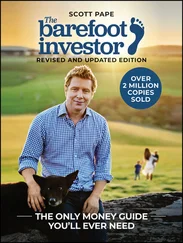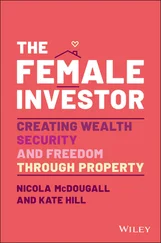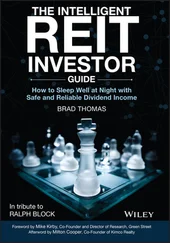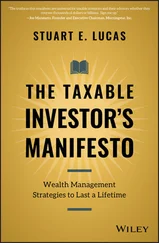Julia Spina
Julia Spinais member of the research team and podcast co‐host at tastytrade where she works as a financial educator and options strategist. Drawing from her background in physics and experience with signal processing and data analysis, Julia introduces viewers to topics in quantitative finance and their applications in options strategy development. Prior to transitioning into finance, Julia worked as a regenerative medicine research scientist before attending the University of Illinois at Urbana‐Champaign in 2015. At the University of Illinois, she earned bachelor's degrees in engineering physics (2017) and applied mathematics (2017) and a master's in physics (2018). Her research focus throughout her graduate and undergraduate studies was experimental quantum optics, and her primary projects included investigating the effects of measurement in optical quantum systems and using single‐photon sources to determine the lower limits of human vision and perception.
Anton Kulikovis a member of the research team and podcast co‐host at tastytrade and a columnist for the financial lifestyle magazine, Luckbox . With a background in finance, data science, and education, he has spent the last four years developing innovative strategies for the retail options market and educating traders in fundamental economic theory on the show. Anton attended the University of Illinois at Urbana‐Champaign where he earned bachelor's degrees in finance (2018) and economics (2018) and worked at the Margolis Market Information Lab. During his time at the University of Illinois, Anton developed coursework on derivatives and capital markets, and taught classes and workshops on financial software at the Gies College of Business.
Tom Sosnoffis an online brokerage innovator, financial educator, and the founder and co‐CEO of tastytrade. Tom is a serial entrepreneur who cofounded thinkorswim in 1999, tastytrade in 2011, tastyworks in 2017, helped to launch the award‐winning Luckbox magazine in 2019, and in 2020 created the first new futures exchange in 20 years, The Small Exchange. Leveraging more than 20 years of experience as a CBOE market maker, Tom is driven by the passion to educate self‐directed investors. After his years on the trading floor, he saw the need to build and design superior software platforms and brokerage firms that specialized in complex financial strategies. His efforts ultimately changed the way options and futures are traded and how digital financial media is produced and consumed. Currently, Tom hosts tastytrade LIVE and continues to drive innovation and know‐how for the do‐it‐yourself investor. Tom has been named to Techweek 's Tech 100 list, Crain's Chicago Business 's Tech 50, and has spoken at more than 500 events across the globe. Tom received the Ernst & Young Entrepreneur of the Year Award and has been featured by prominent publications such as the The Wall Street Journal, Investor's Business Daily, Chicago Tribune, Crain's Chicago Business, Traders Magazine , and Barron's .
Introduction: Why Trade Options?
The house always wins . This cautionary quote is certainly true, but it does not tell the entire story. From table limits to payout odds, every game in a casino is designed to give the house a statistical edge. The casino may take large, infrequent losses at the slot machines or small, frequent losses at the blackjack table, but as long as patrons play long enough, the house will inevitably turn a profit. Casinos have long relied on this principle as the foundation of their business model: People can either bet against the house and hope that luck lands in their favor or be the house and have probability on their side.
Unlike casinos, where the odds are fixed against the players, liquid financial markets offer a dynamic, level playing field with more room to strategize. However, similar to casinos, a successful trader does not rely on luck. Rather, traders' long‐term success depends on their ability to obtain a consistent, statistical edge from the tools, strategies, and information available to them. Today's markets are becoming increasingly accessible to the average person, as online and commission‐free trading have basically become industry standards. Investors have access to an almost unlimited selection of strategies, and options play an interesting role in this development. An option is a type of financial contract that gives the holder the right to buy or sell an asset on or before some future date, a concept that will be explained more in the following chapter. Options have tunable risk‐reward profiles, allowing traders to reliably select the probability of profit, max loss, and max profit of a position and potentially profit in any type of market (bullish, bearish, or neutral). These highly versatile instruments can be used to hedge risk and diversify a portfolio, or options can be structured to give more risk‐tolerant traders a probabilistic edge.
In addition to being customizable according to specific risk‐reward preferences, options are also tradable with accounts of nearly any size because they are leveraged instruments. In the world of options, leverage refers to the ability to gain or lose more than the initial investment of a trade. An investor may pay $100 for an option and make $200 by the end of the trade, or an investor may make $100 by selling an option and lose $200 by the end of the trade. Leverage may seem unappealing because of its association with risk, but it is not inherently dangerous. When misused , leverage can easily wreak financial havoc. However, when used responsibly, the capital efficiency of leverage is a powerful tool that enables traders to achieve the same risk‐return exposure as a stock position with significantly less capital.
There is no free lunch in the market. A leveraged instrument that has a 70% chance of profiting must come with some trade‐off of risk, risk which may even be undefined in some cases. This is why the core principle of sustainable options trading is risk management. Just as casinos control the size of jackpot payouts by limiting the maximum amount a player can bet, options traders must control their exposure to potential losses from leveraged positions by limiting position size. And just as casinos diversify risk across different games with different odds, strategy diversification is essential to the long‐term success of an options portfolio.
Beyond the potential downside risk of options, other factors can make them unattractive to investors. Unlike equities, which are passive instruments, options require a more active trading approach due to their volatile nature and time sensitivity. Depending on the choice of strategies, options portfolios should be monitored anywhere from daily to once every two weeks. Options trading also has a fairly steep learning curve and requires a larger base of math knowledge compared to equities. Although the mathematics of options can easily become complicated and burdensome, for the type of options trading covered in this book, trading decisions can often be made with a selection of indicators and intuitive, back‐of‐the‐envelope calculations.
The goal of this book is to educate traders to make personalized and informed decisions that best align with their unique profit goals and risk tolerances. Using statistics and historical backtests, this book contextualizes the downside risk of options, explores the strategic capacity of these contracts, and emphasizes the key risk management techniques in building a resilient options portfolio. To introduce these concepts in a straightforward way, this book begins with discussion of the math and finance basics of quantitative options trading ( Chapter 1), followed by an intuitive explanation of implied volatility ( Chapter 2) and trading short premium ( Chapter 3). With these foundational concepts covered, the book then moves onto trading in practice, beginning with buying power reduction and option leverage ( Chapter 4), followed by trade construction ( Chapter 5) and trade management ( Chapter 6). Chapter 7covers essential topics in portfolio management, and Chapter 8covers supplementary topics in advanced portfolio management. Chapter 9provides a brief commentary on atypical trades (Binary Events). The book concludes with a final chapter of key takeaways ( Chapter 10) and an appendix of mathematical topics.
Читать дальше












